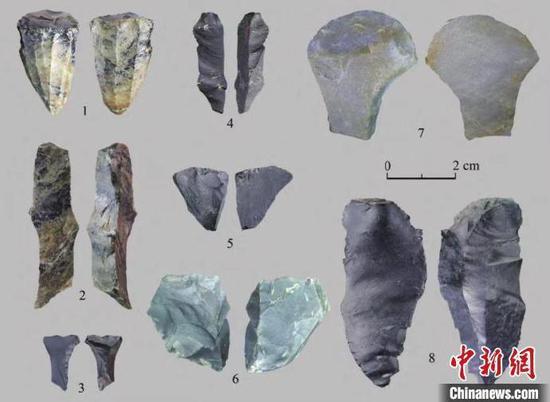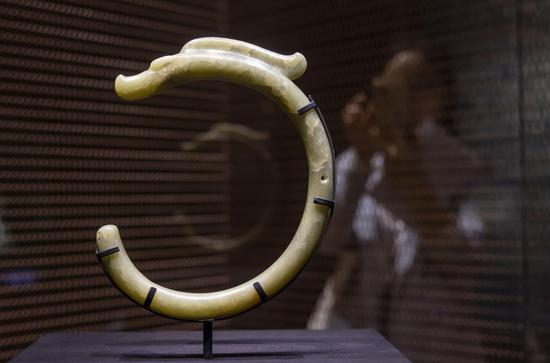
Over 1,000 ancient stone artifacts dating back to the Paleolithic era, also known as the Old Stone Age, spanning from 2.6 million years ago to 10,000 years ago, have been unearthed at the Xiacun archaeological site in North China's Shanxi Province, according to a report by China News Agency on Tuesday.
The Shanxi Provincial Institute of Archaeology unveiled their latest findings on Tuesday, the report said, presenting a rich collection of stone tools and artifacts found at the Ganliang site within the Xiacun ruins, which has undergone several large-scale surveys and excavations since its discovery in 1970.
A total of 1,036 stone artifacts were unearthed at the Ganliang site, with 853 belonging to the lower cultural layer and 183 to the upper cultural layer.
The stone artifacts document two developmental stages within the site’s Paleolithic culture: the lower cultural layer represents the earlier phase characterized by stone technology from lithic to microlithic, while the upper cultural layer showcases advanced microlith technology.
The archaeological findings revealed that raw materials for crafting these stone tools primarily included flint and quartzite. Quartzite and black flint were the main materials in use across the upper and lower cultural layers, with quartzite obtained locally near the Ganliang site and black flint sourced from a more distant location.
Notably, in the lower cultural layer, local quartzite was the predominant raw material.
In terms of the lithic technology, the lower cultural layer featured a direct hard-hammer percussion technique without evidence of pre-formed lithic cores, resulting in diverse and less standardized tool shapes. Some specimens bore a resemblance to microlithic blades.
The upper cultural layer employed both direct hard-hammer percussion to detach stone flakes and a pressure technique to extract microlithic blades, suggesting a more refined approach in the late Paleolithic era.
Furthermore, the tool assemblages in the lower and upper cultural layers differ significantly. Heavy tools like stone axes were absent in the upper cultural layer, indicating functional distinctions between the two layers around 30,000 years ago.
Round-edged stone scrapers in the lower cultural layer were primarily manufactured through direct hard-hammer percussion, while in the upper cultural layer, a pressure technique was predominantly used.
These discoveries have enriched the understanding of China’s late Paleolithic cultures and provided valuable insights into the cultural transition and the origins of the microlithic blade technology of the late Paleolithic era, the report said.


















































 京公网安备 11010202009201号
京公网安备 11010202009201号